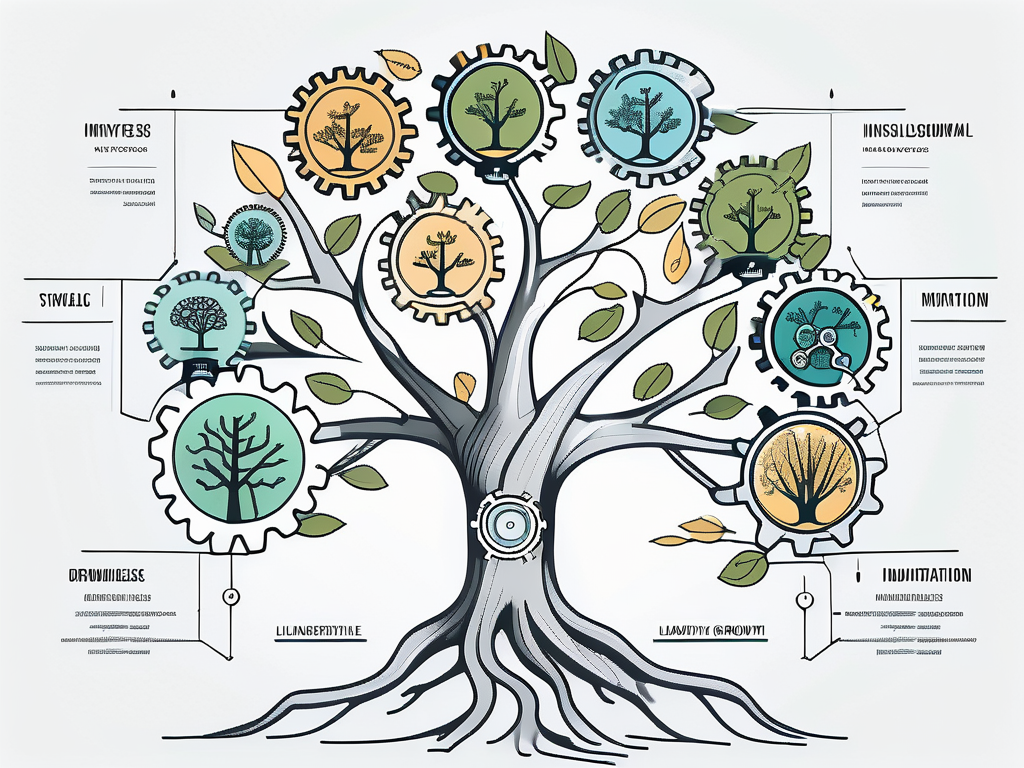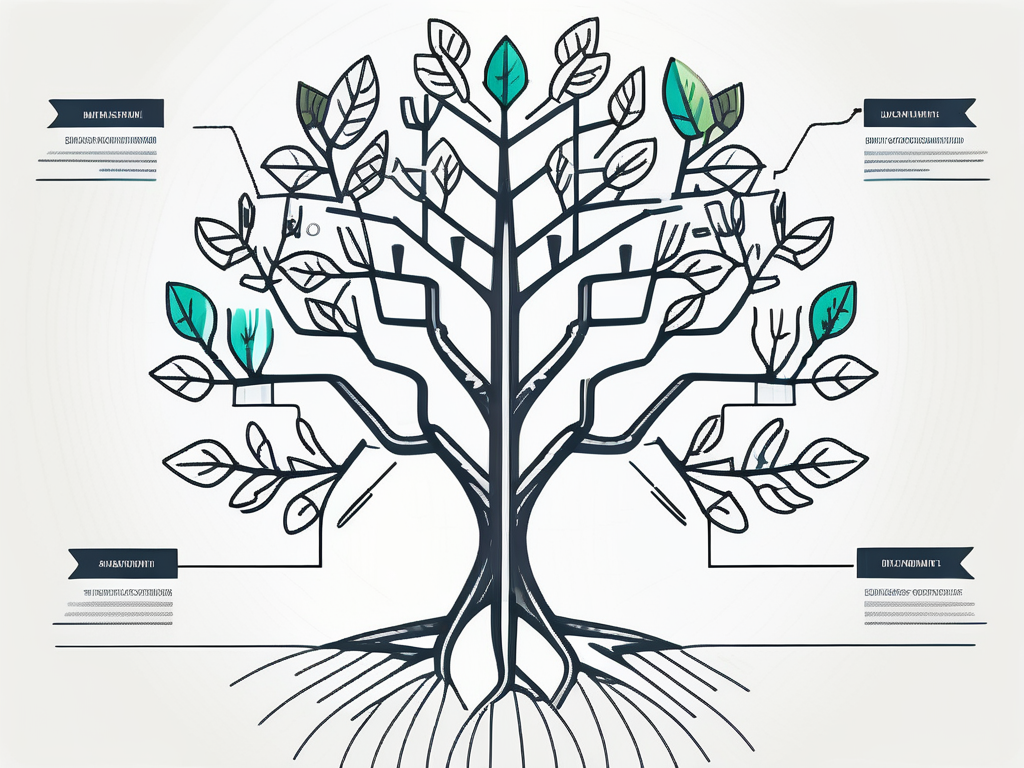Understanding the Product Lifecycle
The product lifecycle is fundamental to understanding how products evolve in the market. By recognizing each stage, businesses can tailor their strategies to maximize growth and customer satisfaction.
Defining the Product Lifecycle
The product lifecycle can be defined as the sequence of stages that a product goes through from development to decline. It typically encompasses five key stages: development, introduction, growth, maturity, and decline. Understanding these stages allows businesses to align their marketing, production, and sales strategies with the current status of the product. Each stage not only influences the operational decisions of a company but also impacts how consumers perceive and interact with the product. This understanding is crucial for maintaining a competitive edge in an ever-evolving marketplace.
Stages of the Product Lifecycle
Each stage of the product lifecycle presents unique challenges and opportunities:
Development:
This is the stage where ideas are conceived, designed, and developed. Significant investment in R&D takes place here. Companies often conduct market research to identify consumer needs and preferences, ensuring that the product will meet market demands upon launch.
Introduction:
A new product is launched into the market. Awareness and marketing efforts are crucial for gaining initial traction. This stage often involves promotional strategies such as advertising campaigns, public relations efforts, and social media outreach to create buzz and attract early adopters.
Growth:
Sales start to increase rapidly as the product gains acceptance. Companies must manage scaling production effectively. During this phase, businesses may also explore distribution channels and partnerships to enhance market reach and capitalize on the growing demand.
Maturity:
Sales growth stabilizes as the market becomes saturated. Focus shifts to differentiation and market retention. Companies may introduce variations or enhancements to the product to appeal to different customer segments, ensuring they maintain a loyal customer base amidst increasing competition.
Decline:
Sales decrease. Firms must decide whether to rejuvenate the product, explore new markets, or phase it out. This stage often requires a careful analysis of market trends and consumer behavior, as companies weigh the costs of revitalization against the potential benefits of discontinuation.
Throughout these stages, the role of customer feedback cannot be overstated. Engaging with consumers and understanding their experiences can provide invaluable insights that inform product improvements and innovations. Additionally, leveraging data analytics can help businesses anticipate shifts in consumer preferences and adapt their strategies accordingly, ensuring they remain relevant in a dynamic market landscape. As the product lifecycle progresses, the ability to pivot and respond to these insights becomes increasingly critical for sustained success.

The Role of Management in the Product Lifecycle
Management plays a vital role in overseeing the product lifecycle. Effective management ensures that each stage is executed with precision and aligns with overall business objectives.
Strategic Planning for Each Stage
Strategic planning is essential at every phase of the product lifecycle. This entails developing specific action plans that address the unique characteristics of each stage. For example, during the introduction stage, a company may adopt aggressive marketing campaigns to generate early interest.
In contrast, during the maturity stage, the focus might shift to optimizing operations and improving customer loyalty programs. Flexibility and adaptability in planning can significantly impact the product's long-term success. Additionally, management must consider resource allocation carefully; investing in research and development during the growth phase can lead to innovative features that differentiate the product in a crowded market. This foresight not only enhances the product's appeal but also strengthens the brand's position in the industry.
Adapting to Market Changes
Market dynamics are always shifting, influenced by consumer preferences, technological advancements, and competitive pressures. To navigate these changes effectively, management must closely monitor market trends and consumer behavior.
By proactively adapting strategies, organizations can ensure that their product remains relevant and competitive, even in challenging market conditions. For instance, leveraging data analytics can provide insights into customer feedback and purchasing patterns, allowing management to pivot quickly in response to emerging trends. Furthermore, fostering a culture of innovation within the organization encourages teams to experiment with new ideas and solutions, which can lead to the development of enhanced products or even entirely new offerings that resonate with evolving consumer needs.
The Impact of Product Lifecycle Management on Business Growth
Product lifecycle management (PLM) is a strategic approach that organizations use to manage a product through its entire lifecycle. Effective PLM can have a profound impact on a company's growth trajectory.
Enhancing Market Position
By actively managing the product lifecycle, companies can foster a stronger market position. This is achieved by ensuring that products meet consumer expectations, adapt to new trends, and constantly evolve according to market needs.
A strong PLM strategy can lead to greater customer satisfaction, loyalty, and, ultimately, a solid competitive advantage in the marketplace. Furthermore, the integration of customer feedback into the PLM process allows companies to fine-tune their offerings, ensuring they remain relevant and desirable. This responsiveness not only enhances brand reputation but also encourages repeat business, as customers feel their voices are heard and valued.
Maximizing Profitability
With the right management practices, businesses can maximize profitability throughout the product lifecycle. This involves optimizing costs during the product development phase, efficiently scaling during growth, and strategically managing decline.
By leveraging data analytics and market research, companies can identify the most lucrative opportunities at every stage and allocate resources accordingly. Moreover, a well-implemented PLM system can streamline collaboration across departments, reducing time-to-market and minimizing waste. For instance, integrating design, engineering, and marketing teams can lead to innovative solutions that not only cut costs but also enhance product features, ultimately driving higher sales volumes. As a result, businesses can enjoy a more robust bottom line while continuously adapting to the ever-changing market landscape.

Challenges in Managing the Product Lifecycle
While managing the product lifecycle is essential, there are numerous challenges that organizations may face. Recognizing these challenges is crucial for developing effective strategies.
Identifying the Right Time for Transition
One of the most significant challenges is determining the right time to transition from one stage of the lifecycle to the next. Misjudging the timing can lead to missed opportunities or costly investments in declining products.
Companies must use data-driven insights to assess market conditions and forecast changes effectively, ensuring that transitions are both timely and strategic. This often involves analyzing sales trends, customer feedback, and competitive actions, which can be a complex and resource-intensive process. Additionally, organizations must remain agile, as market dynamics can shift rapidly, requiring them to pivot their strategies almost overnight.
Balancing Innovation and Consistency
Another challenge involves balancing innovation with consistency. While it is essential to innovate to meet changing consumer demands, maintaining a consistent brand image and customer experience is equally crucial.
A well-managed product lifecycle should integrate innovative practices while ensuring that the core values of the brand remain intact. This balance is key to long-term success. Companies often face the dilemma of introducing groundbreaking features that may alienate their existing customer base. Therefore, conducting thorough market research and engaging with customers through surveys or focus groups can provide valuable insights into how much change is acceptable without compromising brand loyalty.
Moreover, the integration of new technologies can also pose a challenge. As companies strive to stay ahead of the curve, they must consider the implications of adopting new tools and platforms. This includes training staff, updating processes, and ensuring that any new innovations align with the overall brand strategy. The risk of overwhelming both employees and customers with too many changes at once can lead to confusion and dissatisfaction, making it essential to approach innovation with a well-thought-out plan.

Strategies for Effective Product Lifecycle Management
To excel in managing the product lifecycle, businesses must implement effective strategies that leverage technology, customer insights, and market intelligence.
Leveraging Technology for Lifecycle Management
Technology plays a vital role in streamlining lifecycle management processes. Advanced analytics tools, project management software, and customer relationship management (CRM) systems can provide invaluable insights into product performance and customer behavior.
By utilizing these technologies, organizations can make informed decisions, enhance efficiencies, and improve overall product management strategies. For instance, predictive analytics can forecast future trends based on historical data, allowing companies to anticipate market demands and adjust their product offerings accordingly. Additionally, integrating Internet of Things (IoT) devices can provide real-time data on product usage, enabling businesses to refine their products and services based on actual consumer interactions.
Incorporating Customer Feedback into Lifecycle Planning
Lastly, incorporating customer feedback into product lifecycle planning is essential. Understanding consumer needs and preferences can guide product enhancements and adjustments throughout its lifecycle.
Regularly engaging with customers through surveys, focus groups, and online feedback can provide actionable insights that drive product innovation and adaptation. Moreover, utilizing social media platforms as a feedback channel can create a more dynamic dialogue with consumers, allowing businesses to gauge sentiment and identify emerging trends swiftly. This proactive approach not only fosters customer loyalty but also positions the brand as responsive and attuned to its audience, which can be a significant competitive advantage in today's fast-paced market.
In conclusion, managing the product lifecycle is a dynamic and ongoing process that plays a crucial role in driving business growth. By understanding the stages, adapting to market changes, and implementing effective strategies, organizations can enhance their market position, maximize profitability, and overcome the challenges that arise in the competitive landscape.
As you navigate the complexities of managing your product lifecycle for sustained growth, the right partnerships are invaluable. Refetrust offers a robust B2B marketplace to connect you with top-tier agencies and service providers that can drive your product's success at every stage. From leveraging industry insights for strategic planning to implementing customer feedback systems for continuous improvement, our platform ensures you find the perfect match to enhance your market position and maximize profitability. Begin your journey towards strategic growth and time-saving decision-making today. Find Agencies that align with your business needs and propel your organization forward.





